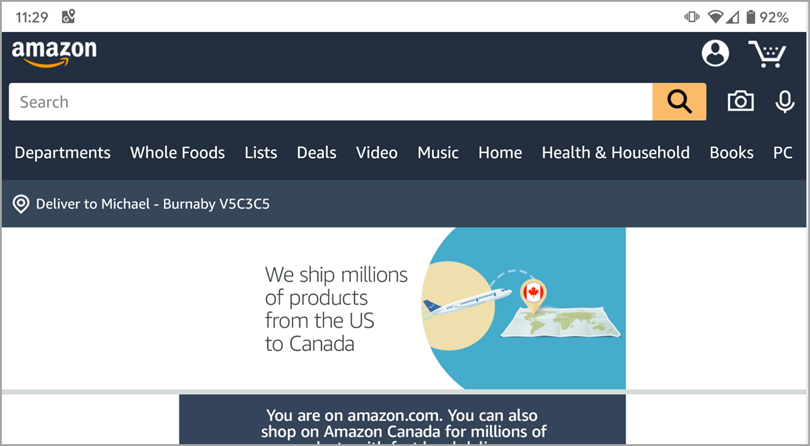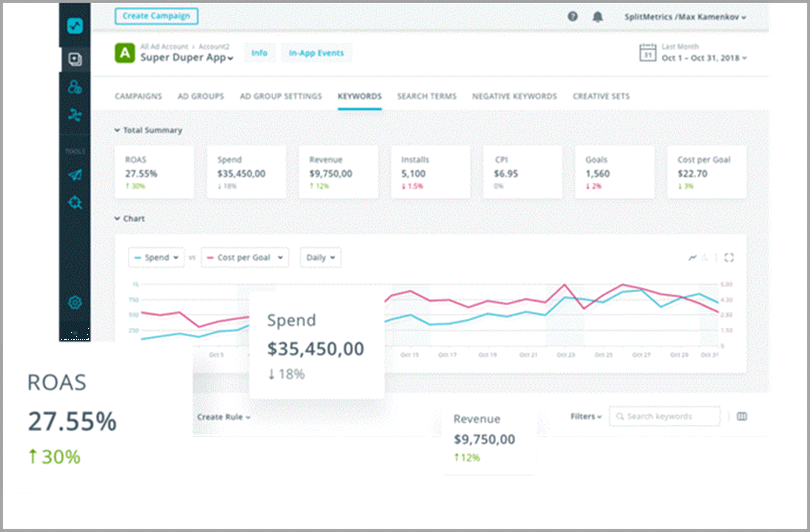
Guest blogging can be a great way to build and grow your business. It’s a way to get your work in front of a new audience and it also helps you to build authority in your niche. It’s actually the most powerful and ethical link building tactic and if you know how to write a perfect guest post pitch, you will be getting some great results.
However, if guest blogging is done incorrectly, it can be quite ineffective and harmful to your brand. Several big blogs have stopped accepting guest posts. Why? Simply because with Google’s latest search algorithm changes, more and more people are sending guest post pitches while the quality of pitches is declining. That makes it much harder for bloggers to find quality content for their blogs.
That’s the reason I wrote this post – to show you how not to do guest posting and how to do it the right way so you can land some guest posts on popular and high-quality websites.
Let’s go over some of the worst guest post pitches that editors get, and how you can avoid making those mistakes.
1. Spammy guest post pitches
Sincerity is always a good idea.
One of the worst types of guest post pitches that editors get is from people who basically portray the following message:
“I didn’t read a single thing about you or your blog, but I have been following your website. I’m just trying to find quick and easy ways to get a link.”
Huh? That sounds like spam and that’s exactly where that type of email will go.
If you can’t spend at least 10 minutes writing an email that clearly outlines your guest posting idea, then why should editors take time to reply to a spammy email? Before you even sit down to draft the email, you need to do your research on the site so you can personalize and create a pitch that stands out.
If not, you’ll end up sending an automated pitch which is quite easy to spot as the language comes across as a “salesy” template without a detailed description of the guest posting idea. Not to mention that copying and pasting a template for a guest post pitch to hundreds of sites is impersonal.
Consider that editors read a LOT of pitches. So, if you got your template off the internet and just plugged in their name and yours, they’ve seen it before.
Another spammy tactic is sending an email multiple times in a short time period. For example, one pitcher sent an email four times in a three-hour period, with messages like, “did you see it? When are you going to publish it?” Furthermore, they proceeded to CC the entire department with, “help! she’s not replying, can you get in touch with her.”
That tactic is spammy and won’t get you the response you want. Our advice? Draft the perfect email and be patient. Remember that editors get hundreds of emails every day.
Here is what you should do to avoid coming across as spammy and automated:
- Sit down and write a real email. Editors don’t like replying to bots (and we’re guessing you don’t either).
- “Hello friend” is not an ideal greeting when you can easily find an editor’s name. An editor’s face and name are usually plastered all over their blog. So, if you’re submitting a guest post pitch to a blog that is operated by a few people, find the most suitable person and address them specifically. (If you’re not going to look around a site to figure out who you should be addressing, then your pitch isn’t genuine.)
- You shouldn’t talk about content generically in your guest post pitch when you can cite an article or a few, that you have written.
- Pitch on a topic that is related to the site.
- Don’t send emails that don’t say anything at all, like: “Hi, I want to contribute. Best, XYZ”
2. Poor quality pitches
The second worst type of guest post pitch an editor gets is one that claims that their posts are of good quality while their pitch is of poor quality.
You know, ones like these:
Example 1

Example 2

Editors sincerely understand that we all need to start somewhere as they were in that position once. They do take that into consideration, but they expect you as a potential guest blogger, to send a quality pitch with some references to your previous writing.
The aim is to see evidence of your writing and industry expertise; and your credibility.
Simply put, if your writing is subpar in your pitch, then editors won’t want to see your work.
Additionally, perhaps shockingly, some bloggers send drafts that contain 500 links that are completely unrelated to the topic. That is a surefire way of getting your pitch automatically rejected.
Here’s what you can do to prevent this from happening:
- Take time to draft and proofread your pitch (for grammatical errors). Ensure that it comes across as professional. (Tools like Grammarly can be of great help)
- Ask someone else to read your email before you send it.
- Include links to your previous writing. The goal is to provide proof that you can add value to their site and establish your credibility.
- Don’t state that you’re an expert in everything – nobody is an expert in everything.
- Don’t pitch 20 variations of the same topic. Each topic must be unique.
Note: If you pitch well but submit a poor or excessively promotional post, it won’t get published. Trust us, nothing angers blog owners like bad writing and promotional articles laden with backlinks. Most bloggers actually won’t post any articles with those characteristics. They prefer well-written and authentic posts that they don’t have to spend time proofing.
There is a common misconception that your guest posts don’t have to be as good as the regular posts on your site because the primary reason for guest blogging is to get people on your site to consume your higher-quality content.
That’s a problem.
That strategy is insurance for not getting another guest post opportunity on that site ever again. The blog owner may not even bother promoting those posts. Plus, people who read your content may not even go to your site.
So, if you’re not going to write a high-quality post, don’t even bother. Always write your best or nothing at all.
How can you prevent that from happening?
- Don’t submit keyword-heavy posts with minimal length. Google won’t even accept it.
- If you can’t write your own guest posts, hire a professional blogger/writer to write engaging content for you. Websites like Upwork, Fiverr and PeoplePerHour are great places to find skilled writers.
Alternatively, you can hire a content marketing agency with experience in your niche. (A content marketing agency is a way to go if you want someone to handle the outreach process for you.)
3. Money, Money, Money
Money talks but not to everyone – especially editors who care about the quality of their content.
So, imagine you’re an editor and you receive the following pitch…
“Hi,
During my research, I found your blog on Google.
I need a couple of my unique posts on your website and I will send you payment via PayPal.
I have a good team of UK and US writers that will write good posts for your website. How much do you charge?
Look forward to hearing from you soon.
Best regards,
Paul”
OK, the first question that probably comes to your mind is, “why would any editor accept payment for subpar content to be placed on their site?” They already put their reputation on the line by giving you a platform to reach their audience, and that’s enough for them.
How do you avoid this mishap?
- Don’t offer payment to any blog in your guest post pitch.
- Quality pitches and quality content sells – that should be your currency.
Keep in mind that this is the first interaction you have with an editor of a particular site, so you need to remember proper etiquette. You’re not doing them a favor by paying them or not charging them.
4. Ignoring guest posting guidelines
Most blogs that you pitch have guidelines for guest blog posts. Some are extensive while others are vague, but they provide you with the necessary information before submitting a pitch to them.
If you don’t read the guidelines, you’ve already started off on the wrong foot. Some websites may even have a separate email address for pitches, a subject line they want you to use, specific formats to follow or guidelines for the topics.
Beyond the guidelines, there are specific emails to send pitches to. Not doing your research and sending your pitch to the wrong email or at the wrong time is one of the worst mistakes that people who pitch guest posts make.
Another common mistake in ignoring guest posting guidelines is pitching an article for the wrong domain. For example, the domain for pitching guest posts to GetResponse is blog.getresponse.com versus getresponse.com – one of them is the blog and the other is the main product page. They receive a lot of emails with people wanting to contribute to their main product page. Those pitches automatically get rejected. Moral of the story – make sure you read the guest posting guidelines, send your pitch to the right email address and offer to write for the right domain.
Back to guest posting guidelines… Here is how to avoid sending a pitch that doesn’t adhere to a specific site’s guidelines:
- For each pitch you send, do your research. Find out who your audience is and how your pitch will impact their site. If they have a similar article to the one you’re pitching, suggest a different topic that will fit well with their brand and yours. If your blog posts do not adhere to what the website stands for and other articles on their site, then your pitch won’t fit in and won’t be accepted.
- Read the guidelines twice and adhere to them. Knowing the guest posting guidelines is the first step to pitching to a blog. It will show editors that you’ve taken the time to research their website. Just like that, your pitch becomes more appealing.
5. Pitches that don’t provide tangible information
Another bad guest post pitch example is the ones that don’t provide any tangible information. They expect that they’re doing editors a favor by pitching them content; and that editors should, in return, Google them, do their due diligence and find out more about them online.
Well, no editor has the time to do that. Remember that they’re the ones doing you a favor and giving you a platform to expand your audience.
How can you avoid falling into that trap?
- Introduce yourself and talk about what you do in a couple of sentences.
- Provide a link to your Twitter, LinkedIn or blog profiles so they can learn more about you and your writing.
- The key is to give editors a good understanding of who you are and why they should consider you to write for them in a few sentences.
- Put forward your post suggestion in a detailed body paragraph. Get into the meat of it – talk about what problem(s) it solves, the questions it will answer and your research sources.
6. Demanding to be published
Last but not least, demanding to be published is a common mistake that a lot of guest post pitchers make. Remember that editors are doing you as much a favor as you are adding value to their website. If they deem your pitch to be of quality and feel that it would add value to their site, great!
If not, it just means that your pitch wasn’t good quality or that your ideas or work aren’t properly aligned with the goals of their site.
In that case, don’t send an email to an editor demanding that they publish your work. For example, one pitcher sent the following emails to an editor, “Hi, here’s my pitch, edit it” and “publish my guest post.”
*Crickets* and then right to the spam folder. It’s a surprisingly common mistake that you should avoid.
Wrapping Up
Pitching guest posts is the trickiest part of guest blogging. Especially if you are pitching to a large publication or one you have never had a connection with.
Google has made it quite clear that guest blogging just for links is not cool. That’s why guest blogging has a reputation for being spammy.
You should instead focus on using guest posting as a way to create interesting content for readers and to generate brand awareness. When you create good information for your audience, your guest posting efforts will generate good traffic and leads.
We hope this post helps you avoid the all too common guest post pitching errors that a surprisingly large number of marketers and bloggers make.
The good news is that you can minimize the potential for errors and maximize your chances of getting that much-coveted guest posting opportunity if you follow these best practices.
Guest author: Nikola Banicek is an internet marketing specialist at Point Visible, a marketing agency providing custom outreach and link building service. He’s a laid-back guy with experience in PPC, copywriting, and project planning. When he’s not working, he’s either gaming, watching football or anime.
The post The 6 Worst Guest Post Pitches You Could Send an Editor appeared first on Jeffbullas's Blog.
source https://www.jeffbullas.com/worst-guest-post-pitches/




























